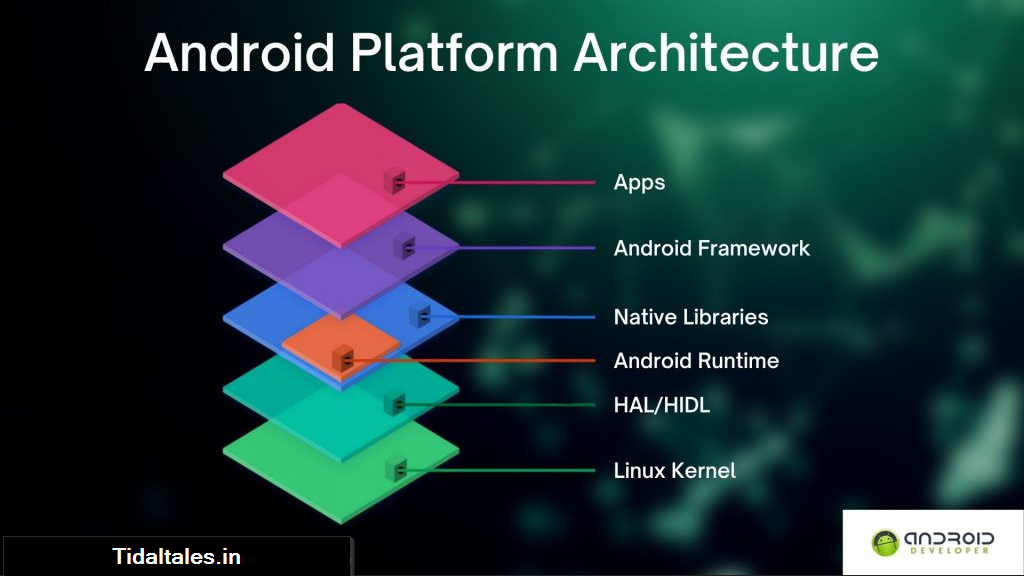Introduce Android as one of the most widely used operating systems in the world, powering billions of devices from smartphones to tablets. Point out the vital role of Android security in protecting user data across millions of devices globally, given the platform’s extensive reach.
Overview of Android OS
Android is a powerful and flexible operating system, based on the Linux kernel, that powers millions of devices globally—from smartphones and tablets to wearables, TVs, and even vehicles. Developed by Google, Android has grown to become the most widely used mobile OS, with an open-source foundation that allows developers to create highly customizable and versatile applications.
Understanding the Android Kernel
The kernel is the core component of an operating system, responsible for managing all critical system resources, including memory and peripheral devices like keyboards and displays. Acting as a bridge between application software and hardware, the kernel allows applications to interact with the device’s physical components. It operates in a protected memory area called kernel space, which is separate from user space, where applications (like web browsers) run. Any interaction between applications and the kernel is processed through a system call, which allows user-space applications to request services from the kernel.
Due to its central role and complete control over system resources, any compromise at the kernel level could grant attackers unrestricted access to device resources and sensitive user data, making kernel security a vital focus in Android penetration testing.

Android Architecture and Its Components
The Android operating system is built on a layered architecture, designed to offer robust functionality, flexibility, and security. Each layer has distinct components that interact to deliver the full Android experience, from running applications to managing hardware. Here’s a breakdown of each layer in the Android architecture.- Linux Kernel: At the core of Android’s architecture is the Linux Kernel, which provides foundational functions like process management, memory management, and hardware communication.
- Hardware Abstraction Layer (HAL): The HAL serves as an interface between the Android software and the device’s hardware. It allows higher-level Android services to interact with the hardware without needing to know the hardware details.
- Android Runtime (ART) and Core Libraries: The Android Runtime (ART) is the environment in which applications run on Android devices. ART executes app code and optimizes performance, such as by pre-compiling code. Core Libraries include essential libraries that provide key functionalities, like data structures, file I/O, and networking, that developers use to build applications.
- Native C/C++ Libraries: Android includes native libraries written in C or C++ to provide high-performance services that are vital to the OS. These libraries include: Media, Graphics, SQLite, SQLite
- Application Framework: The Application Framework layer provides APIs (Application Programming Interfaces) that developers use to build applications. These APIs manage essential app functions and interactions with the system.
- Applications Layer: The top layer in Android’s architecture, the Applications Layer, is where user-facing applications reside. This layer directly interacts with the Application Framework to access services and resources necessary to run.

Raghav Rajput
With a strong academic background, including an MCA and CEH certification, I bring over two years of hands-on experience in cybersecurity. In my role, I focus on Android, iOS, and web penetration testing, consistently applying advanced skills to safeguard digital landscapes. Outside of work, I enjoy the intellectual challenge of chess and find relaxation in listening to music, which balances my passion for cybersecurity with personal growth and creativity.
Last Update: November 12, 2024






You’ve written something that resonates on a deeper level, not just with the mind, but with the heart.